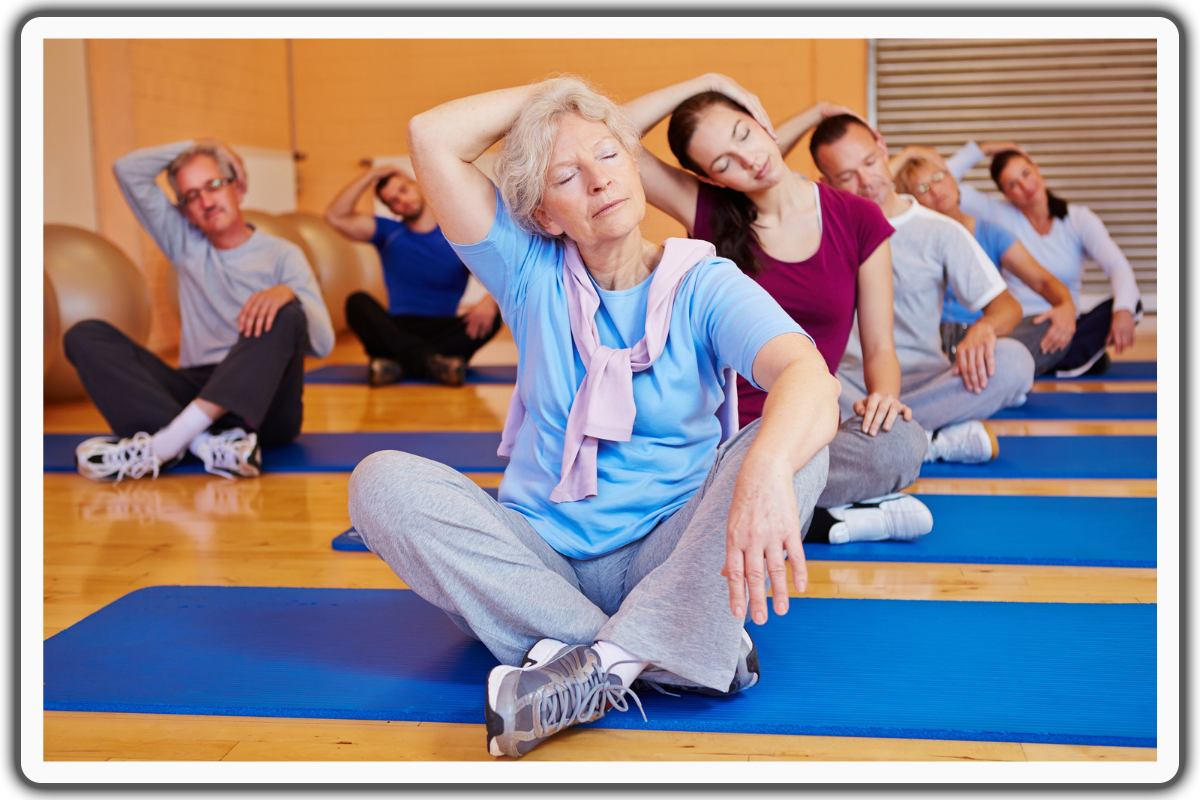
Mastering Neck Strengthening Exercises for Health and Stability
Neck Strengthening Exercises are specialized movements designed to improve the resilience and agility of the muscles in your neck. The advanced neck exercises go beyond basic neck exercises and require higher skill and fitness. They involve controlled movements that target specific muscles, helping to improve posture, reduce neck pain, and enhance overall neck stability.
It's important to approach these exercises cautiously, gradually progressing as your strength improves. Please consult a healthcare professional or fitness expert before attempting advanced neck strengthening exercises to ensure they suit your needs and health status. Regularly performing neck-strengthening exercises contributes to the optimal health of the cervical spine, falling under the category of musculoskeletal well-being.
The Importance of Neck Strengthening

The neck is a crucial part of our body, responsible for supporting the weight of our head and allowing for its movement in various directions. However, many people experience neck pain and stiffness due to sedentary lifestyles and poor posture.
Individuals can address muscular imbalances, enhance endurance, and bolster the cervical spine's stability by engaging in such exercises. Strengthening the neck muscles can help alleviate these issues and improve overall neck health.
Benefits of Neck Strengthening Exercises
Neck strengthening exercises offer myriad benefits, contributing to overall well-being and addressing various aspects of upper body health. Combined with targeted stretches like the doorway chest stretch and levator scapula stretch and incorporating techniques such as squeezing shoulder blades, these exercises become even more effective.
Improved Posture
Strengthening your neck and upper back muscles is crucial in enhancing posture. Incorporating exercises that focus on squeezing shoulder blades together helps align the spine and reduces the risk of slouching.
Reduced Neck Pain
Engaging in specific neck-strengthening exercises, under the guidance of a physical therapist if needed, can alleviate neck pain by promoting muscle endurance and resilience. The levator scapula stretch, particularly, targets muscles often associated with neck tension.
Enhanced Neck Stability
Strengthening exercises contribute to better stability in the neck and shoulder girdle. This increased stability is vital for various daily activities, preventing strain and minimizing the risk of injuries.
Increased Range of Motion
Regularly pulling arms and incorporating exercises involving chin tucking can enhance flexibility in the neck and upper back. This is particularly beneficial for individuals with stiffness or restricted mobility.
The chin-tucked position, often emphasized in neck-strengthening routines, helps counteract forward head posture. This is crucial in a modern, technology-driven era where prolonged screen time can contribute to poor neck alignment.
Enhanced Athletic Performance
Strengthening the neck muscles is essential for athletes, contributing to overall strength and stability. A well-balanced neck helps support the shoulder girdle, minimizing the likelihood of injuries while engaging in physical activities.
Stress Reduction
Combining neck-strengthening exercises and stretches like the doorway chest stretch can help alleviate tension and stress in the neck and shoulders. This can lead to a sense of relaxation and improved overall well-being.
Incorporating a holistic approach that includes exercises such as squeezing shoulder blades, doorway chest stretch, levator scapula stretch, pulling arms, and maintaining proper posture with the chin tucked can significantly strengthen your neck and upper back muscles. Seeking guidance from a physical therapist on an individual basis ensures a safe and effective exercise routine tailored to individual needs and health conditions.
Advanced Exercises for Neck Strengthening
Here are some of the exercises that can be done to help strengthen the neck:
1. Lying Face Down Neck Resistance
Begin by lying down on your stomach on a flat bench, maintaining good alignment of your head, shoulders, hips, and legs. Position yourself with your shoulders slightly past the edge of the bench, bringing your neck and head to be off the bench. Contract your core and place both hands behind your head. Gently pull your head down as you breathe in, ideally to be parallel to the floor. Hold this position for a couple of seconds. Exhale and slowly raise your head back up to the starting position. Repeat the movement.
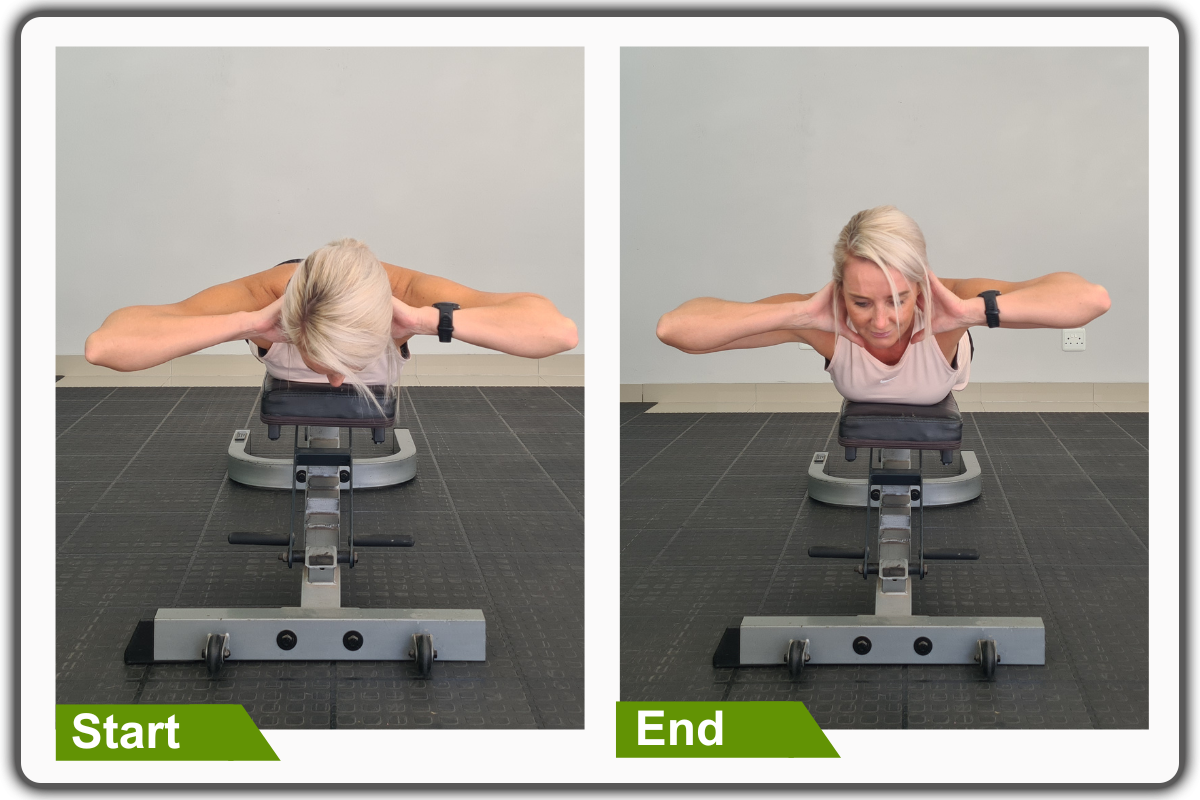
2. Lying Face-Up Plate Neck Resistance
Lie on your back on the flat bench, with your knees bent and your feet flat on the floor. Maintain good alignment with your head, shoulders, and hips. Place the weight plate on your forehead. While keeping the plate secure on your forehead, slowly lower your head back semi-circularly as you breathe in. Raise your head back up to the starting position in a semi-circular motion as you breathe out. Hold the contraction for a second.
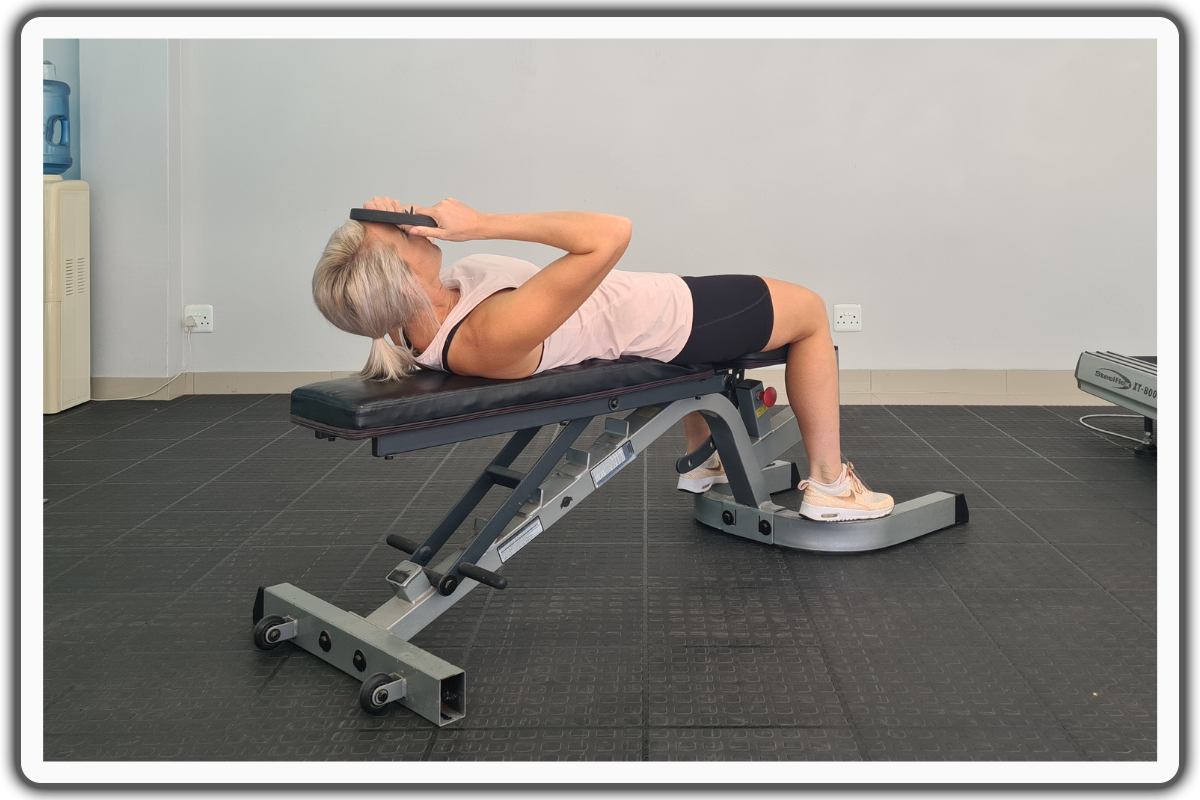
Easy and Effective Neck Exercises for Neck and Shoulder Pain
1. Neck Roll
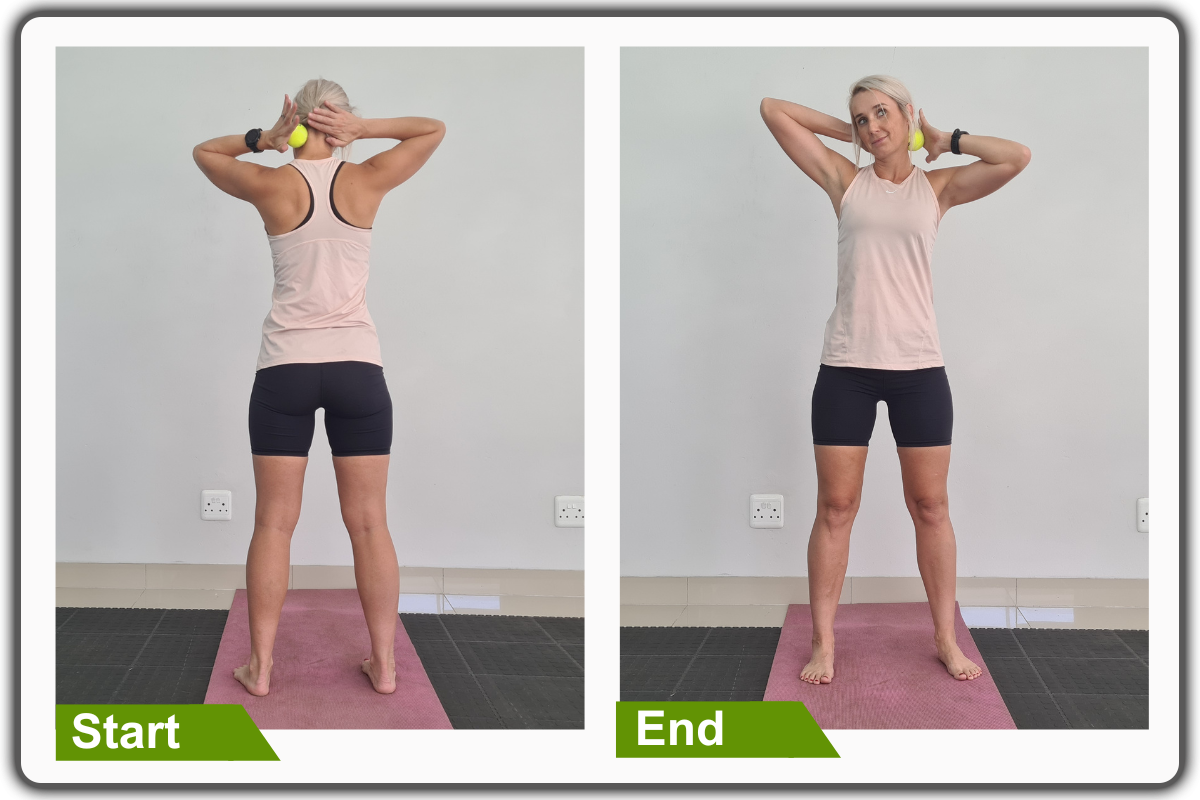
For this exercise, use a tennis ball or a massage ball.
Begin in an upright standing position with your feet hip-width apart, maintaining good alignment of your head, shoulder, hips and legs. Position the ball against the top of your neck. then start rolling the ball in a counterclockwise direction. Return to the starting position and repeat the movement in the opposite direction.
Note: Ensure smooth and controlled movements to avoid strain.
2. Side Neck Stretch
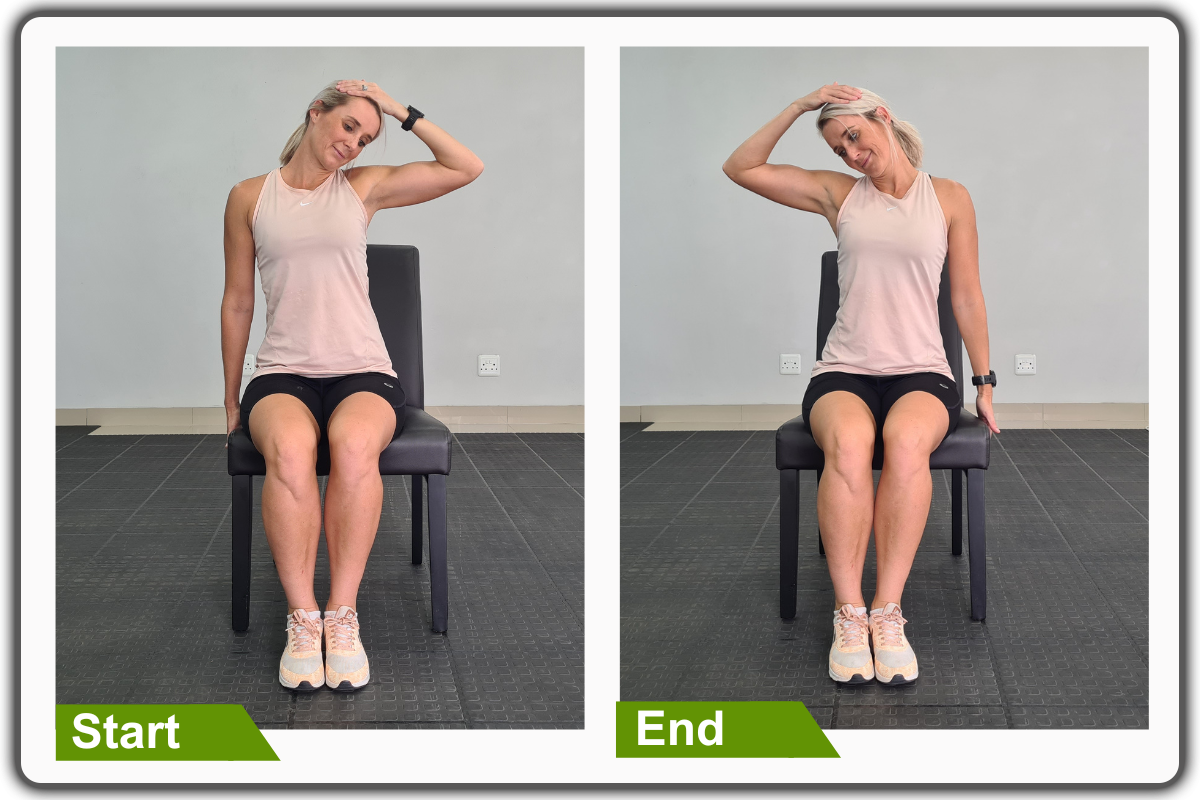
Begin in an upright sitting position on the chair with your feet close together, maintaining good alignment with your upper body. Reach behind your back with one arm, then drop your opposite ear down towards your shoulder. Use your hand to gently pull your head closer to your shoulder, stopping when you feel a gentle stretch on the side of your neck. Hold this position for several deep belly breaths, in through your nose, out through your mouth. Repeat the movement on the opposite side.
3. Neck Forward Stretch
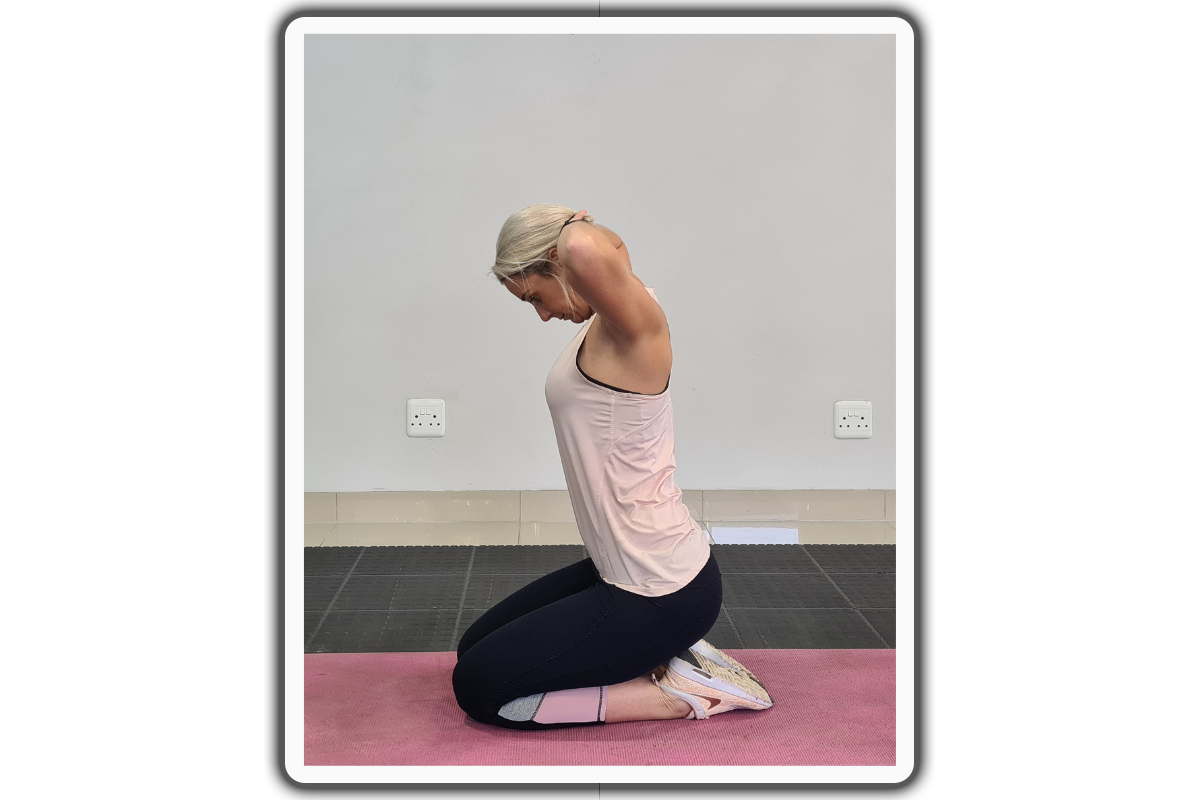
Begin in an upright kneeling position with your toes tucked under your heels. Shift your hips back to rest your seat on your heels, maintaining good alignment with your head, shoulders, and hips. Interlace your fingers behind your head, then slowly pull your head down, stopping when you feel a gentle stretch on your back neck muscles. Hold this position for several deep belly breaths, in through your nose, out through your mouth.
Precautions and Considerations

While advanced neck strengthening exercises can be beneficial, it's important to approach them with caution and consider the following precautions:
- Start Slowly: If you're new to neck strengthening exercises, gradually increasing the intensity is essential. Overexertion or improper form can lead to muscle strains or other injuries.
- Seek Professional Guidance: Seek advice from a healthcare professional or fitness specialist before attempting advanced neck strengthening exercises. They can evaluate your requirements and offer direction on appropriate techniques and advancement.
- Listen to Your Body: Pay attention to any discomfort or pain during the exercises. If you experience any discomfort or sudden sharp pain, cease the activity immediately and consult a medical professional.
- Modify as Needed: Certain exercises may not suit you if you have a pre-existing neck condition or injury. Modify or avoid exercises that exacerbate your symptoms and focus on those that provide relief and strengthening without causing pain.
Conclusion
Advanced neck strengthening exercises offer numerous benefits, including improved posture, reduced neck pain, and enhanced neck stability. By integrating these exercises into your workout regimen, you can strengthen the muscles in your neck, leading to better overall neck health and functionality.
However, it's crucial to approach these exercises with caution, seeking professional guidance if needed and listening to your body. Remember to start slowly, progress gradually, and modify exercises as necessary to ensure they suit your needs.
Consistency and proper technique can achieve a stronger and more resilient neck, contributing to your overall well-being.
